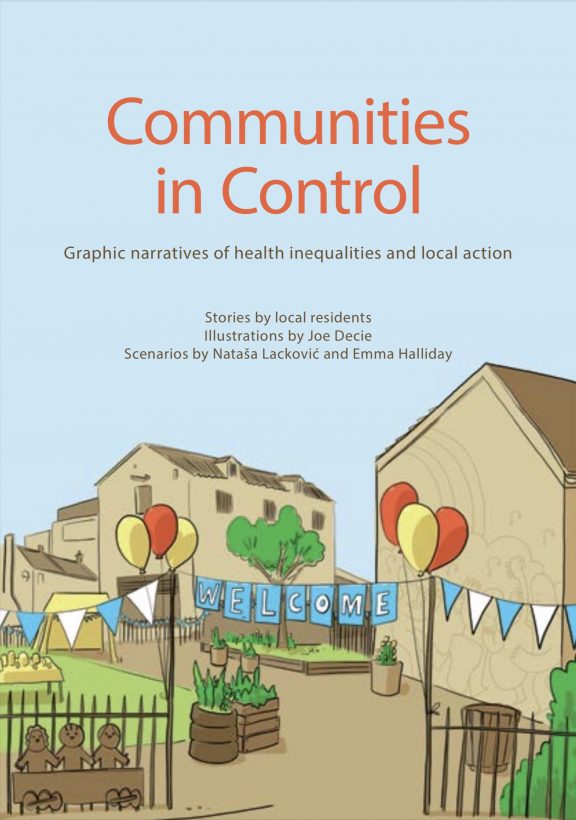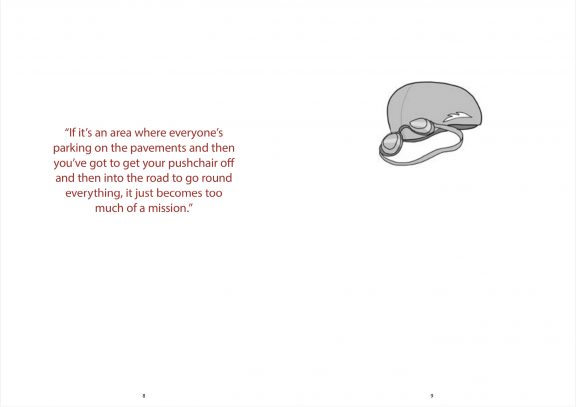
Using a graphic story booklet in health inequalities research

Main text body
This case study illustrates a meaningful way of using comics as a reflective tool in health inequalities research as well as a way of reporting and disseminating research findings in equity sensitive ways.
The Communities in Control study (https://communitiesincontrol.uk) is led by researchers based at universities across England to evaluate the longer term impact for health inequalities of Big Local.
Big Local is a resident-led place based programme funded by the National Lottery Community Fund and managed by Local Trust(https://localtrust.org.uk/big-local), where residents of 150 English areas have a range of support and at least £1 million, to improve their neighbourhoods as places to live.
With residents, the study team created a graphic narratives booklet (https://communitiesincontrol.uk/narratives-booklet) drawn by the artist Joe Decie (http://www.joedecie.com), to share residents’ accounts of the issues that affect health inequalities in local areas. The illustrations also convey how groups of residents in England are taking action to improve the conditions that affect health and wellbeing in a neighbourhood such as transport or environmental issues.

Second part of text and second photo
An initial use of the booklet involved engaging practice and public audiences with issues of health inequalities. From past engagement experiences, the Communities in Control study team was well aware that such discussions could become channelled into a narrower focus on lifestyle issues such as smoking rather than the wider determinants of health. Drawing on stories in the booklet as a reflective tool aided more thought-provoking group discussions about social determinants of health.
Reflecting on using the illustrations in this way, Dr Emma Halliday said, “New to comics and graphic novels, I harboured initial reservations.” She continued, “Given the scale of health inequalities in the UK, I wondered whether the form was appropriate for representing the range of local people’s experiences.” However, the evaluation by residents and professionals has noted the accessibility and potential power of visual methods.
Acknowledgements: All illustrations Joe Decie © 2018. This project received funding from the NIHR School for Public Health Research (SPHR) and NIHR CLAHRC North West Coast.)